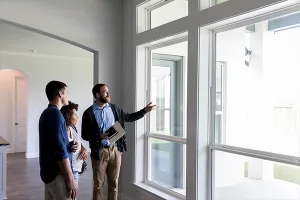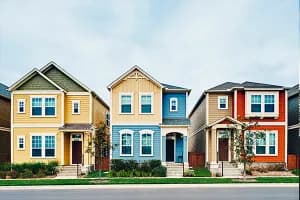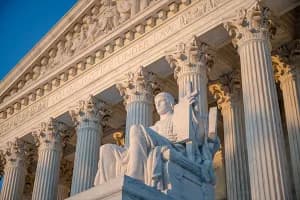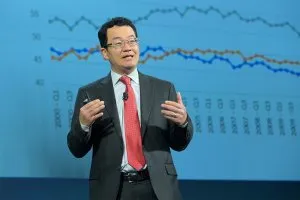Green-built affordable housing is not an oxymoron. Rather, backers say, it’s a common-sense way of constructing single family homes, duplexes, apartment buildings, other dwellings and even whole neighborhoods that conserves energy, water and provides a healthy environment in which to live.
And while it may cost a little bit more up front to build, it saves on utility bills over the long-run. According to a New Ecology study of 16 green affordable housing developments, the average increase in costs over conventional building was only 2.4 percent.
A 2009 study by Enterprise Community Partners pegged the increase in price at 2 percent. And a recent report by the Portland Development Council in Oregon, said costs are dropping as more builders become familiar with the methods.
Still, if you asked most people what they think building using green technology means, they’re likely to mention solar panels, geothermal wells or even windmills. All of which can be expensive and have long payback periods.
Talk to affordable housing advocates from the high desert of Idaho to steamy Washington, D.C., however, and you’ll get an entirely different picture.
“Green building isn’t just a wealthy man’s playground, where somebody puts solar panels up on their roof,” says Noreen Beatley, a consultant with the U.S. Green Building Council (USGBC). “This is about sustainability, which is why it’s such a good fit for affordable housing. It’s not a fad.”
And that means rather than having so-called green “bling,” affordable housing projects are being sited — where possible — to take advantage of the sun and designed to all but eliminate unwanted air leakage. Builders also are using heavy duty insulation; energy efficient appliances; low-flow shower heads; and paints, sealants and carpets that don’t emit toxic fumes and aggravate illnesses such as asthma.
These changes can increase the cost of development by several percent, but result in dwellings that use — proponents say — 30 percent less energy, pollute less and are better for the environment and occupants.
“A lot of it is that little things can add up to great big returns,” Beatley says. “Many of them really are common sense things that some people have been doing for years. Others come from ongoing improvements in building science.”
Beatley, whose organization developed the Leadership in Energy and Environmental Design (LEED) standards and certification program in the late 1990s, says affordable housing and green building and retrofitting techniques are a good fit.
“We work a lot with affordable housing developers,” she says. “We even have a program called LEED for Neighborhood Design that gives out grants to organizations that want to get LEED ND in their neighborhoods. Instead of certifying buildings, it certifies whole neighborhoods. We’re also working with public agencies that have old housing stock that need to be retrofitted. We want to make sure homes they are updating or replacing are healthy and energy efficient.”
Beatley traces the green building movement to the 1970s and the Arab Oil Embargo, when President Carter stressed conservation and installed solar panels on the roof of the White House.
Progressive cities like Boulder, Colo., and Austin, Texas, adopted energy efficiency standards then and kept them, even after the energy crisis ended and gas prices dropped.
“They said, ‘we shouldn’t go back to our old, wasteful ways,’” Beatley says. “So those cities have been green for a long time. It’s just part of what they do.”
The first LEED ratings came out in 2000, but are continually being evaluated. “We are updating and testing LEED constantly,” says Beatley, who estimates that now 49 percent of LEED home certifications now go to affordable housing developments.
One of the major financiers and advocates of affordable housing, Enterprise Community Partners, began its Green Communities program in 2004.
Dana Bourland, vice president of green initiatives at Enterprise Community, says the key to keeping green affordable is to think about healthy and energy efficient techniques from the very start of the planning process.
“If you do that, it doesn’t have to cost much more at all; you’ll save a lot of money down the road,” she says, noting that Enterprise has documented energy and water savings of around 30 percent on its green projects.
“The challenges are deciding how to do it and taking the time to start early so that you are integrating green into the project, not adding it on later when it will be more expensive.”
Bourland says Enterprise founder Jim Rouse, who began financing and advocating for affordable housing three decades ago in Washington, D.C., had a passion for providing safe and healthy housing for low-income people.
“He understood the impact that the built environment has on the planet, as well as the impact that it has on us as people,” she says.
“We’ve always been aware of those things and tried to Figure out how to rehab or build new housing that is well-designed, durable, safe and healthy to live in. We founded the National Center for Healthy Housing and have had a strong hand in a lot of smart growth partnerships at the national level.”
Bourland says the key to keeping costs down on green-built projects is using a development team that has already worked on similar developments.
“And what really makes a difference is how early they started integrating green into the project and which ones they use,” she says. “Obviously, if they are halfway there and decide to throw green on top of an existing project, it is going to add to the cost.”
Bourland says renewable energy technologies, while admirable, have much higher up-front costs than simpler things that have to do with the building envelope.
“So the Green Communities Criteria we’ve developed always looks at cost-effective green methods and materials that can be integrated into properties without a large increase to that first cost,” she says.
“And certainly, in markets where there are subsidies or incentives, we encourage exploring renewable technologies,” she says. Beatley agrees and says the USGBC encourages affordable housing developers to make dwellings solar ready so they are able to add photovoltaic cells later on.
“It’s set up so the connection can be made and boom, you’re done,” she says.
Bourland says building green and building smart are often the same.
“A lot of this stuff is not revolutionary at all,” she says. “It is really bringing better building science to the table and making sure that someone is really managing the construction process, looking for the details of how insulation is installed, how ducts are sealed, doing a lot of the planning and design upfront to make sure that the mechanics fit the size of the house.”
Bourland cites a recently completed green affordable housing development for seniors in New York City called Serviam Gardens that is part existing building and part new construction.
In addition to thick insulation, efficient appliances and low-VOC paints, the $68 million project also has an 8,000-square-foot green roof complete with a garden where the residents can grow flowers and vegetables.
“That’s a bonus for sure,” says Bourland.
Across the country in Seattle, Enterprise also funded and guided the development of the “Bart Harvey,” a 50-unit apartment complex for low-income seniors that also features a garden roof. The project was funded through a combination of funds from the federal department of Housing and Urban Development and low-income tax credit equity.
The project’s design was guided by the energy efficiency and green building criteria set forth by Enterprise Green Communities and includes energy efficient electric and HVAC systems and low-or-no-VOC finish materials.
Down in New Orleans, Enterprise is directing the work on a 27-acre development on the site of the former Lafitte public housing complex that will feature 1,500 homes and apartments that will all be built to Green Communities standards that incorporate healthy and energy-efficient building practices, materials and systems.
Green-built affordable housing is also going up in rural America.
Michelle Griffth, executive director of ARCH Community Housing Trust, says her group is building a 24-unit senior apartment project in Hailey, Idaho, that was designed by a LEED-certified architect.
The town of 8,000 is 12 miles south of Sun Valley, one of the country’s top ski resorts. Real estate prices are high in the area, Griffth says, and the development fills a much-needed niche.
“The project is on a small lot and by luck was sited to take advantage of sun,” she allows. “It also has exceptional energy performance, storm water controls, low-flow toilets and showers, as well as a high-efficiency irrigation system,” she says.
Her group considered solar panels and geothermal, but she says it didn’t pencil out.
“It all depends on how your project is financed,” she says. “We just didn’t have the extra money it would have required.”
But some affordable housing projects do have solar panels.
In Oakland, the East Bay Habitat for Humanity group recently built the 54-home Edes Avenue development in an economically depressed area near the Oakland Colisuem. Throughout California, all new Habitat homes have solar panels, thanks to an in-kind donation from the Pacific Gas and Electric utility.
The development was built on a brownfield, so first the polluted soil had to be hauled away, says Ben Grubb, construction manager for East Bay Habitat.
“The solar panels may be the flashiest part, but we did lots of other things to make the neighborhood green,” he says. “We followed California’s Greenpoint system and also built to LEED Platinum standards, though the development was not rated because it costs about $3,000 to have a house certified.”
Matt Clark, Habitat’s national director of construction technology, says regional affiliates are strongly encouraged to build green, but are allowed to use standards from their area.
“The Energy Star rating system is one we recommend, but here in the Southeast, we have Earthcraft, which was developed in 1999 by the Greater Atlanta Homebuilders Association and Southface,” he says.
Grubb says all the houses in the Edes Avenue neighborhood are oriented for passive solar heating and cooling. In addition, many have stained concrete floors that act as a thermal mass to act as a heating and cooling agent. In addition, they have used fly ash in the concrete, recycled from coal-fired power plants, which makes the concrete stronger and keeps the ash from going into landfills.
“We also use advanced framing techniques to get more insulation into the walls,” he says. “That means using two-by-six studs instead of two-by-fours, which results in a R-21 rating, nearly 50 percent better than the R-13 of a typical two-by-four wall.”
In addition, all attics were built with radiant barrier, he says, using a reflective coating to cool down the attics and keep the houses cooler in the summer.
“That’s a big deal for us in California,” he says.
Because Habitat developments work with a large number of volunteers, the building process is simplified to make things simpler for installers.
“People come out and help, in part, because they want to learn how to put things in their own houses when they do renovations,” he says. “Radiant barriers are something that you can buy for $200, put up in your attic and your attic temp drops 10 degrees. That saves you tons of money on your summer air conditioning and lowers heating costs in the winter as well.”
For the Edes Avenue development, heating bills are about half the amount for similar-sized homes (roughly 1,200 square feet) in the area.
“And during the summer, some of the homes have no energy bills because the solar panels are creating electricity,” he says.
Like other green-built projects, Edes also stressed indoor air quality to reduce asthma and other lung illnesses by using low-VOC paints, stains and finishes. They also took the time to seal and clean air ducts of dust and construction debris before the new owners moved in.
“Green building isn’t just about saving money and water, though that’s certainly important,” he says. “It’s about putting up houses and apartments that are healthy to live in. We think that’s equally important, too.”








